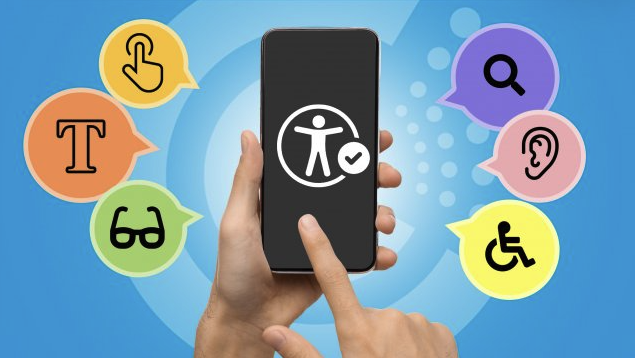Mobile Accessibility: Why It’s Crucial for Websites and Apps

In today’s mobile-first world, making websites and apps accessible is no longer just a courtesy. It is a necessity. Mobile accessibility means designing digital platforms that everyone can use, regardless of circumstances or abilities. Businesses increasingly rely on mobile apps and responsive websites to connect with customers, and prioritizing accessibility is not only the right thing to do but also a smart decision. Here is why mobile accessibility should be a top priority for your organization.
The Role of Accessibility in a Mobile-Driven World
Mobile devices have become essential tools for billions of people worldwide. Whether shopping, communicating, or learning, mobile platforms offer unparalleled convenience. Yet, their true potential lies in their ability to connect people across varying circumstances and environments.
Mobile accessibility is not just about accommodating disabilities. It is about creating flexible platforms that work for everyone. Imagine someone navigating a website on a busy subway, a user relying on voice commands while cooking, or a person with a cracked screen trying to shop online. Accessibility ensures that no matter the situation, users can interact seamlessly with your digital platforms. By addressing these broader needs, businesses can deliver better usability, retain more customers, and improve satisfaction.
Why Mobile Accessibility Matters for All
Mobile accessibility ensures inclusivity and enhances the overall experience for all users, not just those with disabilities. While over one billion people globally have a disability, accessibility features like scalable text, simple navigation, and responsive design benefit everyone. Older adults, people recovering from injuries, and users in difficult environments all appreciate tools that make interactions smoother.
Moreover, accessibility is a legal requirement in many regions. In the United States, the Americans with Disabilities Act (ADA) and global standards like the Web Content Accessibility Guidelines (WCAG) mandate equal access to digital platforms. Companies that neglect accessibility face the risk of lawsuits, fines, and reputational harm.
But accessibility is not just about compliance. It is also a key driver of innovation. Features like voice navigation, which originated as assistive tools, are now widely used and appreciated by all users. By prioritizing accessibility, businesses position themselves as inclusive and forward-thinking while reaching a broader audience.
Mobile Accessibility as a Competitive Edge
In a competitive digital marketplace, accessibility can give businesses a distinct advantage. Companies that invest in creating accessible websites and apps demonstrate a commitment to customer-centric design. This resonates with consumers, many of whom prefer to support brands that prioritize inclusivity and usability.
Accessible design often aligns with other critical goals like speed, efficiency, and mobile responsiveness. For instance, ensuring that an app works well with voice commands enhances the experience for hands-free users, while simplifying navigation improves usability for everyone. Businesses that incorporate accessibility into their design strategy not only improve customer retention but also stand out in a crowded market.
A well-designed accessible app or website sends a powerful message to all users that your business values their time and experience. This can foster loyalty and help create positive brand associations that set you apart from competitors.
Building Accessible Mobile Experiences
To create truly accessible mobile platforms, businesses should focus on elements like logical navigation, scalable text, and compatibility with assistive technologies such as screen readers. Responsive design is crucial to ensure websites look and function well on devices of all sizes. Visual clarity, including proper color contrast and captions for multimedia content, helps users engage with content effortlessly.
Accessibility is not a one-time project. It requires continuous testing, user feedback, and staying updated on accessibility trends. By embedding accessibility into your digital strategy, you not only meet legal requirements but also foster loyalty and trust among users.
Prioritizing mobile accessibility is about creating a digital world where everyone feels included and empowered to interact with your brand. Whether you are seeking to grow your audience, enhance customer experiences, or lead with innovation, accessibility can make all the difference.
If you want to make your websites and apps more accessible, reach out to us at biz@allianceinnovations.com. Let us help you build inclusive, user-friendly digital experiences that truly stand out.
